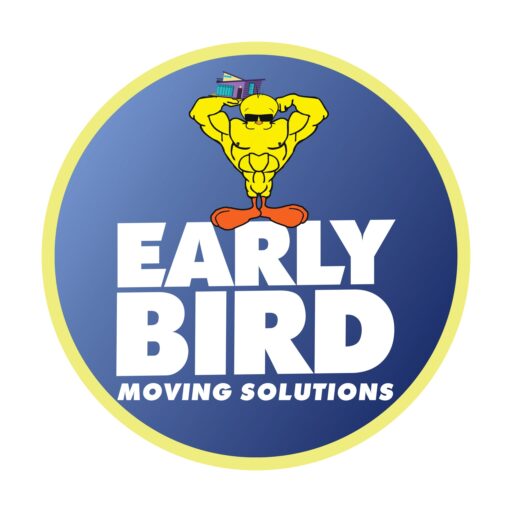
The Ultimate Moving Guide for Edmonton
Moving to a new home can be both exciting and overwhelming. Whether you are relocating within Edmonton or moving to the city for the first time, proper planning and preparation are essential to ensure a smooth and stress-free moving experience. Early Bird Moving Solutions has put together this comprehensive moving guide packed with expert tips, timelines, and packing strategies designed specifically for Edmonton residents.
Step 1: Plan Ahead for Your Edmonton Move
Successful moves always start with detailed planning. Start by creating a moving checklist that outlines every task from booking your movers to setting up utilities in your new home. Planning at least 6-8 weeks in advance is ideal, especially if you’re moving during peak moving seasons (spring and summer).
Book your moving company as early as possible to lock in your preferred date and avoid last-minute price hikes. Early Bird Moving Solutions offers flexible booking options and expert advice tailored to Edmonton’s unique moving conditions.
Step 2: Declutter and Donate to Lighten Your Load
Moving is a perfect opportunity to reduce clutter. Go through your belongings and decide what to keep, donate, sell, or recycle. This step not only decreases your moving costs but also makes unpacking in your new home faster and easier.
Consider local donation centers in Edmonton such as the Edmonton Food Bank, Salvation Army, or Habitat for Humanity ReStore for unwanted but usable items. Properly disposing of hazardous materials like paint and batteries is crucial—check the City of Edmonton’s guidelines for safe disposal.
Step 3: Packing Tips and Tricks for a Safe Move
Packing can be one of the most time-consuming parts of a move. Use high-quality, sturdy boxes and packing materials to protect your belongings. Label each box with the room it belongs to and a brief description of contents for easier unpacking.
Pack heavier items in smaller boxes to avoid injury or damage. Wrap fragile items carefully with bubble wrap or packing paper. For delicate or valuable possessions, consider our professional packing services to ensure maximum protection and peace of mind.
Don’t forget to prepare a “First Night” box with essentials such as toiletries, clothes, basic kitchen items, and important documents, so you can settle in comfortably on your first night in your new home.
Step 4: Prepare for Moving Day
Moving day can be hectic, but staying organized helps reduce stress. Keep essential items like medications, chargers, important documents, and snacks with you rather than packing them in the moving truck.
Communicate clearly with your movers and provide any necessary directions to your new home. If you have pets or children, arrange for them to stay with a friend or family member during the move to keep everyone safe and calm.
Make sure to clean your old home or arrange for professional cleaning services if required by your lease or sale agreement. Also, do a final walkthrough to ensure nothing is left behind.
Step 5: Setting Up Your New Home in Edmonton
Once you arrive at your new home, prioritize setting up utilities like electricity, water, internet, and gas. The City of Edmonton offers convenient online services for managing utility accounts.
Unpack room by room starting with the most important areas such as the kitchen and bedrooms. Use your labeled boxes to stay organized and avoid feeling overwhelmed.
Take time to explore your new neighborhood. Edmonton offers plenty of amenities including parks, community centers, and great schools—getting familiar will help you settle in faster.
Moving Resources Specific to Edmonton
- City of Edmonton Moving Guidelines: Important regulations, waste disposal, and parking permits for moving trucks.
- Edmonton Parking Permits: How to secure temporary permits for your moving truck.
- Local Donation Centers: List of places where you can donate items.
- Seasonal Moving Tips: How to prepare for Edmonton’s cold winters or summer heat during your move.
- Public Transit Info: Adjusting your commute post-move.
Expert Tips for a Stress-Free Edmonton Move
- Book Movers Early: Edmonton’s busy seasons fill up quickly. Secure your moving date well in advance.
- Label Everything: Proper labeling saves time and confusion on moving day.
- Use Local Services: Take advantage of Edmonton-based moving and packing companies familiar with the city’s logistics.
- Weather Preparedness: Be ready for unpredictable weather by keeping tarps, blankets, and waterproof covers on hand.
- Stay Hydrated and Take Breaks: Moving can be physically demanding—drink water and rest when needed.
Why Choose Early Bird Moving Solutions for Your Edmonton Move?
At Early Bird Moving Solutions, we specialize in making your Edmonton move easy and efficient. With years of experience, our team understands local challenges and works hard to provide fast, reliable, and affordable moving services tailored to your needs. Whether you’re planning months ahead or need last minute help, we’re here to assist you every step of the way.
Our comprehensive services include:
- Residential and commercial moving
- Packing and unpacking
- Last minute and emergency moving
- Specialty item moving (pianos, antiques, fragile items)
- Storage solutions
Contact us today and let Early Bird Moving Solutions be your trusted moving partner in Edmonton!
Call Us Today at (587) 400-1644